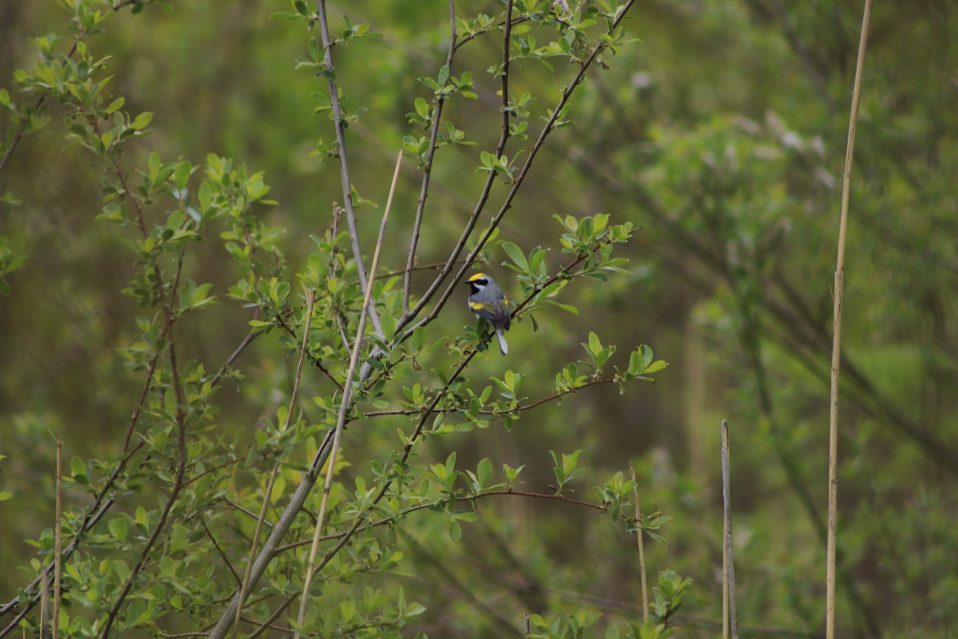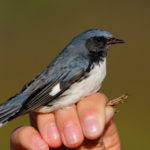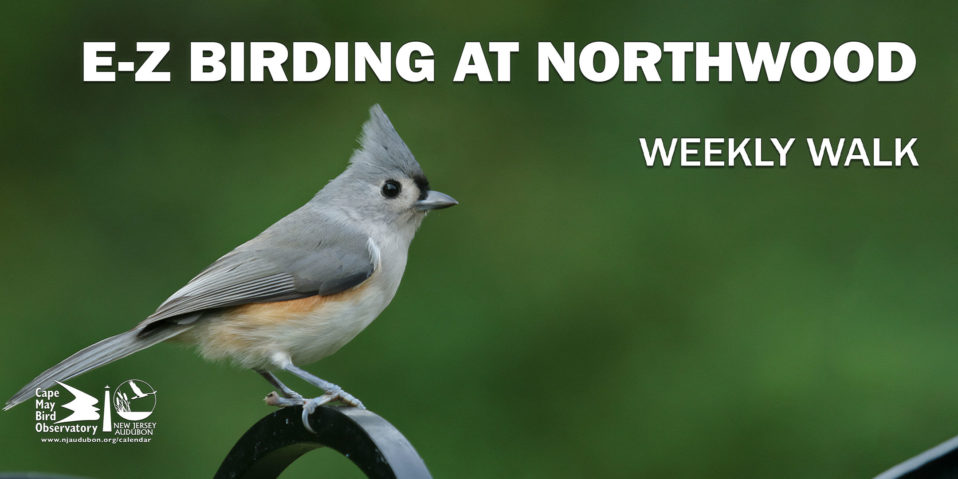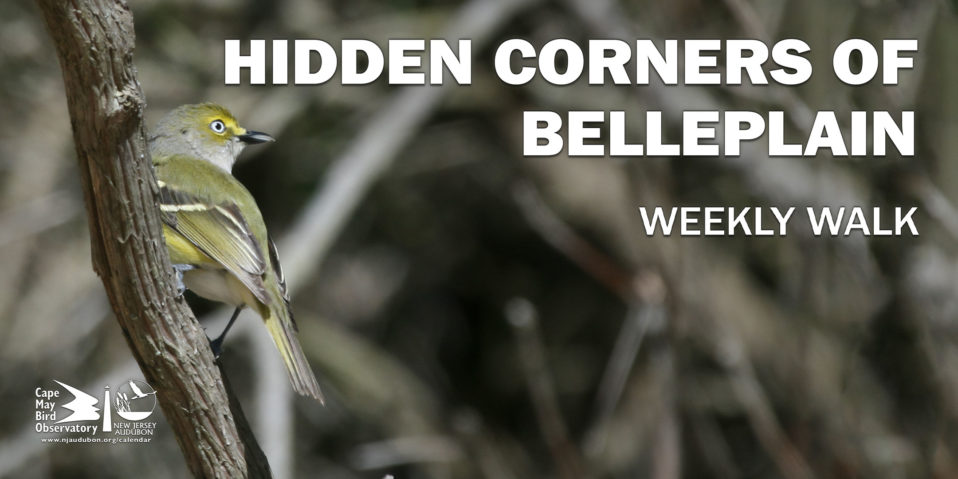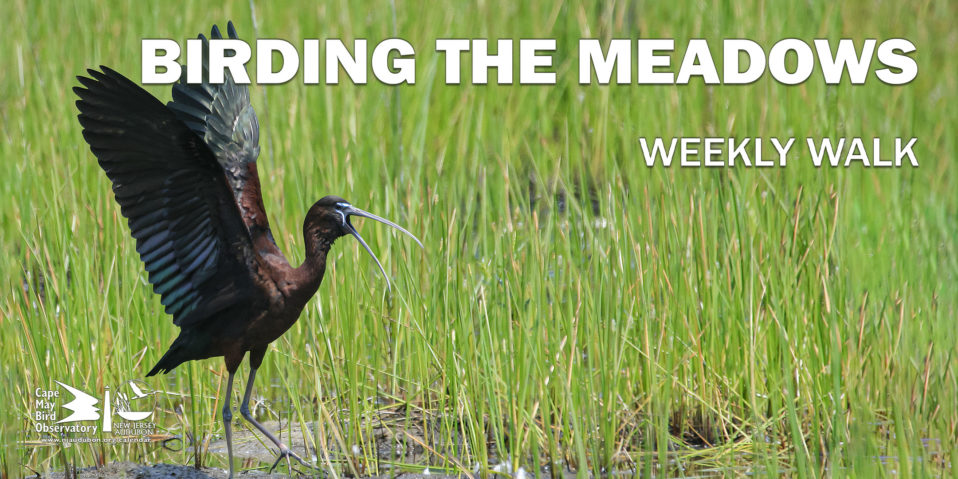On May 20, 2020 a rare Golden-winged Warbler (Vermivora chrysoptera) was found using a patch of young forest on Sparta Mountain where the mature trees had previously been harvested to create young forest habitat for the warbler and other wildlife. The rare warbler was discovered by NJ Division of Fish and Wildlife Senior Zoologist, Sharon Petzinger, while conducting annual bird surveys. New Jersey Audubon Stewardship Project Director John Parke photographed the bird at a later date in the same location. The warbler has been observed occupying the young forest habitat throughout the 2020 breeding season. This is the first time that Golden-winged Warblers have been recorded at this particular location utilizing the created young forest habitat.
The Golden-winged Warbler is a long-distance migrant that spends winter months in Central and South America, returning to North American forests each year in the spring to breed. The birds’ nest on the ground in forest openings where sunlight stimulates abundant plant growth, which provides concealment for the nests and abundant insects to feed on. Young forest habitat has become uncommon in New Jersey and throughout the northeastern United States where forests have matured over the last century. Young forest habitat is critically important for many species of birds, hundreds of species of insects, numerous plants, and a wide array of wildlife.
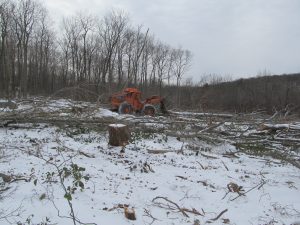
Post forest harvest treatment on Sparta Mountain as part of the NRCS Working Lands for Wildlife Golden-winged Warbler Initiative (2014) – Photo by Don Donnelly
To address this conservation concern, the U.S. Fish and Wildlife Service commissioned a Status Assessment and Conservation Plan for the Golden-winged Warbler in 2000, which led to the creation of the Golden-Winged Warbler Working Group in 2003. The group consists of a consortium of leading scientists from academic institutions, government agencies and non-government organizations that have developed strategies to recover the species on a national level. In conjunction with these efforts, the USDA Natural Resources Conservation Service has spearheaded a recovery effort on private land under the Working Lands for Wildlife Program. This program offers technical assistance to landowners and incentivizes habitat creation for Golden-winged Warblers and other imperiled wildlife by providing cost-share payments for the work involved. The premise is to keep wildlife habitat in place while also helping private land stay available for other agricultural uses. The Golden-winged Warbler recently found at the Sparta Mountain project site was a direct result of these collaborative efforts, and proof that carefully planned purposeful forest management can provide critically needed wildlife habitat.
“Golden-winged Warblers typically occupy young forest habitat five to six years after that habitat has been established. Forests historically underwent significant disturbances that removed the dominant and mature trees creating gaps and openings for new plants and trees to flourish. Changes in the land and human influence have minimized these disturbances and consequently habitat for wildlife. Golden-winged Warblers as shown through research appear to be a bit picky in that they like a later stage of young forest habitat and they like those patches to be surrounded by a more mature forest. This site was managed about six-years ago. In warbler time, the Golden-wing Warblers arrived right on time,” said Eric Stiles, President and CEO of New Jersey Audubon.
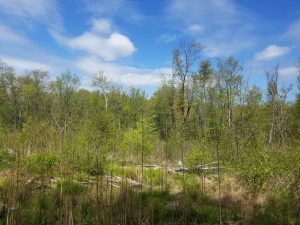
The same forest harvest treatment area in 2020 on Sparta Mountain where the Golden-winged Warbler stayed for the 2020 breeding season. Photo by John Parke
“The appearance of the Golden-winged Warbler on a New Jersey Working Lands for Wildlife contracted site is the culmination of 8 years of hard work and determination from our field staff and conservation partners. We can only hope that this is the beginning of this stunning bird’s resurgence throughout the state. Since the program began in 2012, NRCS has partnered with over 32 landowners representing 762 acres of habitat. With the prime NJ habitat for this species spanning roughly 450,000 acres, we hope that this Warbler sighting serves as inspiration to many other forest landowners to consider managing their land for this imperiled species,” said Diane Gray, NRCS Acting State Conservationist.
NJ Audubon began working with the New Jersey Division of Fish and Wildlife to create young forest habitat and recover Golden-winged Warbler and other wildlife in decline in 2005. The partnership expanded in 2012 through a collaboration with the USDA Natural Resources Conservation Service and the National Fish and Wildlife Foundation to promote and incentivize the creation of young forest habitat on private lands, with the intention of benefiting Golden-winged Warbler and other wildlife. To date, hundreds of acres of habitat have been enhanced on private lands in northern New Jersey under the Working Lands for Wildlife Program.




